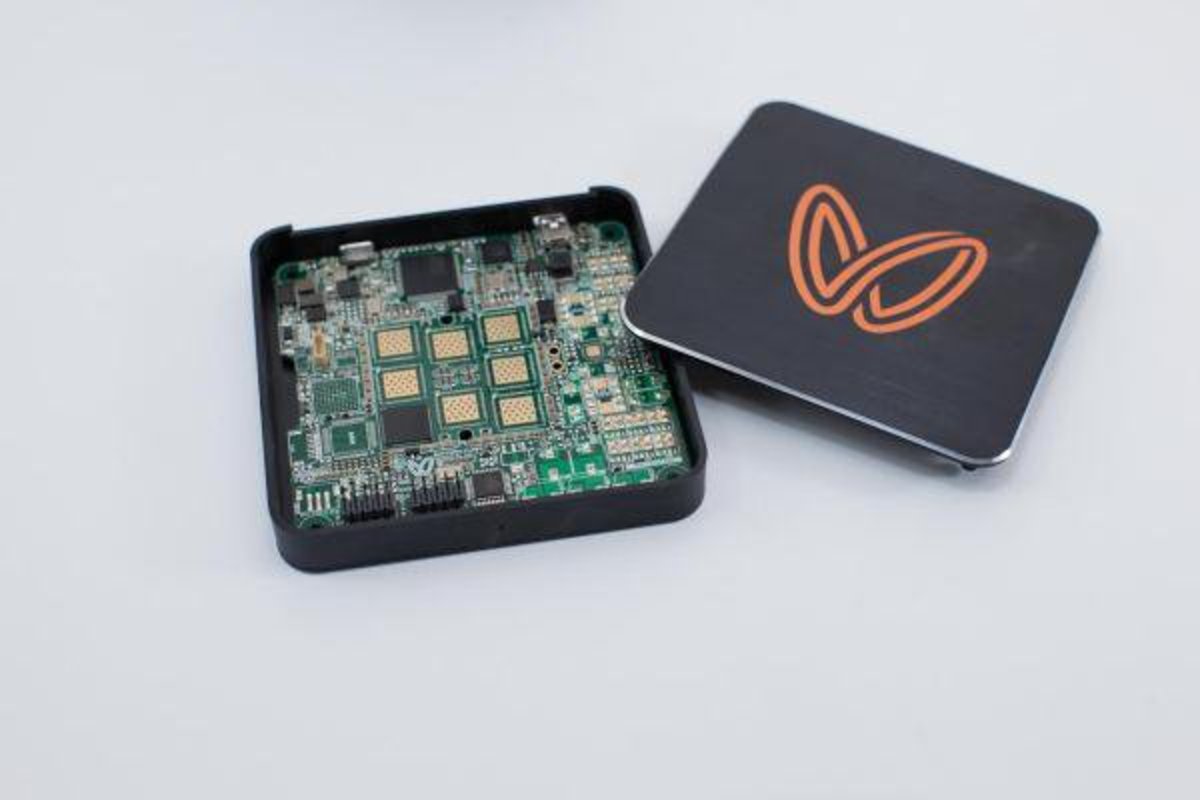
Update: rumors of bASIC’s demise have been, at least for now, grossly exaggerated.
Updates on the Bitcoin ASIC mining scene are coming faster and faster as the shipping dates for all three leading contenders approach. Only a few days ago, all major competitors were poised to release their products around January 19, and it looked as though the eight month long wait for the new mining technology would finally draw to a close. Now, however, it appears that most of us will have to wait a little longer.
The first troubling news came on Saturday when Dave, manager of the bASIC project’s parent company BTCFPGA, announced that the project was on the brink of collapse, and was processing refunds. BTCFPGA has been in trouble for over a week; on January 5, another BTCFPGA employee who goes by Tom, or “cablepair” on the company forums, announced on the BTCFPGA forums that shipping would be delayed considerably due to Chinese New Year celebrations in China. In 2013, the date for the Chinese New Year will be February 10, and factories typically close for a week on both sides of the holiday (or two weeks total), allowing for celebrations similar to Thanksgiving and Christmas, but more prolonged since Chinese factory workers often live far away from home and need days to get back. However, the consequences to businesses relying on China as part of their supply chain extend far beyond this. Raw materials suppliers often shut down weeks prior to the main celebration to anticipate the reduction in demand, and after the celebrations production also picks up very slowly. Many employees take extra vacation time right after the holidays for Chinese New Year – a sensible decision, as they live so far away from home and taking multiple shorter breaks would not allow them to see their families. At many factories, the situation is even worse: up to 50% of the workers do not return to their jobs at all. Thus, factories start off the new year understaffed, at a time when they need to be the busiest bringing production back on track.
On January 8, BTCFPGA customers received another message in which Tom announced the “final – never again changing date for bASIC shipment:” March 15-29. The next day, Dave announced that “there are new player(s) that have come to the fore pledging to support this project – this may come as a complete buyout or by taking a cash equity position – the details are being hammered out over the next day or two.” He also confirmed that under the new deal the March 15-29 shipping date would be on schedule. On January 12, however, Dave made a post stating that the deal was off. On January 15, however, Dave provided some good news: bASIC was still alive, and Tom was working hard on a deal that would ensure that the company keeps going. “Tom sounded very upbeat and motivated to see bASIC placed in the hands of a team that can carry it forward to complete his original vision.” Dave wrote.
On Monday, Butterfly Labs, facing accusations of what some consider to be evasive behavior, have come out and announced a specific deadline: the week of February 10. The date comes as a shock to some, particularly as as little as one week before today many people expected Butterfly Labs to deliver slightly ahead of Avalon’s preset deadline, January 19. However, Butterfly Labs’ Josh Zerlan has written a post extensively describing the reasons behind the delay, and precisely what the company still needs to do over the next few weeks. The main cause of the delay is a decision that the company made to switch the technology that it uses to connect its integrated circuits to the rest of the processor. Its first decision had been to use the “Quad-Flat No-leads package” (QFN) technology, but later tests showed that with QFN the chips were getting uncomfortably hot. “Our chips would have functioned as currently spec’d within our thermal tolerances, Zerlan writes, “but we would have very little thermal headroom to really crank things up. With an eye towards the future, we decided to bite the bullet and release a product that is ready for the long haul as opposed to releasing something now that would require exotic cooling to be pushed past 80 GH/s or so.” The perfectionist attitude runs deep within the company; even the ASIC team’s payment, Zerlan writes, is “effectively tied to the success of the chip” – not the release date. They are now instead using a “flip chip ball grid array” (FCBGA).
The outline of Butterfly’s plans in the weeks to come is as follows. This week, the company will travel to the packaging facility for a final preparation and walkthrough, and confirm travel plans to the fabrication facility. Next week, preparation for final assembly will take place and the team will make its way over to the fab. On the week starting Jan 27, final chips will roll off the production line and manufacturing will start for the units themselves. On the week starting Feb 3, the chips will be packaged and everything will be assembled. Finally, on the week of Feb 10, Zerlan writes, “we descend upon the Post Office, DHL, UPS and FedEx like a horde of angry locust.”
In the meantime, ASICMiner appears to have been delayed only slightly compared to its prognoses from weeks ago; in an update on January 10, ASICMiner announced that they had already placed the necessary mass production orders, and so they are expected to turn on their devices relatively soon. They are also helped by the fact that their business model is different from the others, relying on keeping their machines in-house and earning money through a combination of raising shares and pocketing the mining revenues themselves, so they do not need to bother with shipping and can get away with somewhat less sturdy hardware. Avalon‘s Yifu Guo, on the other hand, confirms that shipping is still on track for January 19.
If all goes according to plan from here, some customers will be turning on their ASICs as early as next week, and will have two weeks of unexpectedly high revenue as without competition Avalon and ASICMiner’s machines will be able to collect a large fraction of the fixed Bitcoin mining reward. Also in Avalon customers’ favor is the fact that mining difficulty will take a while to adjust. Their first batch will contain 300 machines, each of which are capable of 60 GH/s, sending the network hashrate from about 21 TH/s to nearly 40 TH/s. The next difficulty target is estimated to take place on block 217728, almost exactly at the time that many customers will be receiving their Avalon ASICs, so the first time mining difficulty significantly moves up to reflect the network’s newfound strength will only happen in early February. Butterfly Labs will, unfortunately, miss the golden opportunity, and buyers of bASICs will have to wait even longer is they choose to spend their refunds on a competitor’s product. Regardless, however, it is becoming clear that every day we are getting closer to the pinnacle of Bitcoin mining coming right to our desktops.










